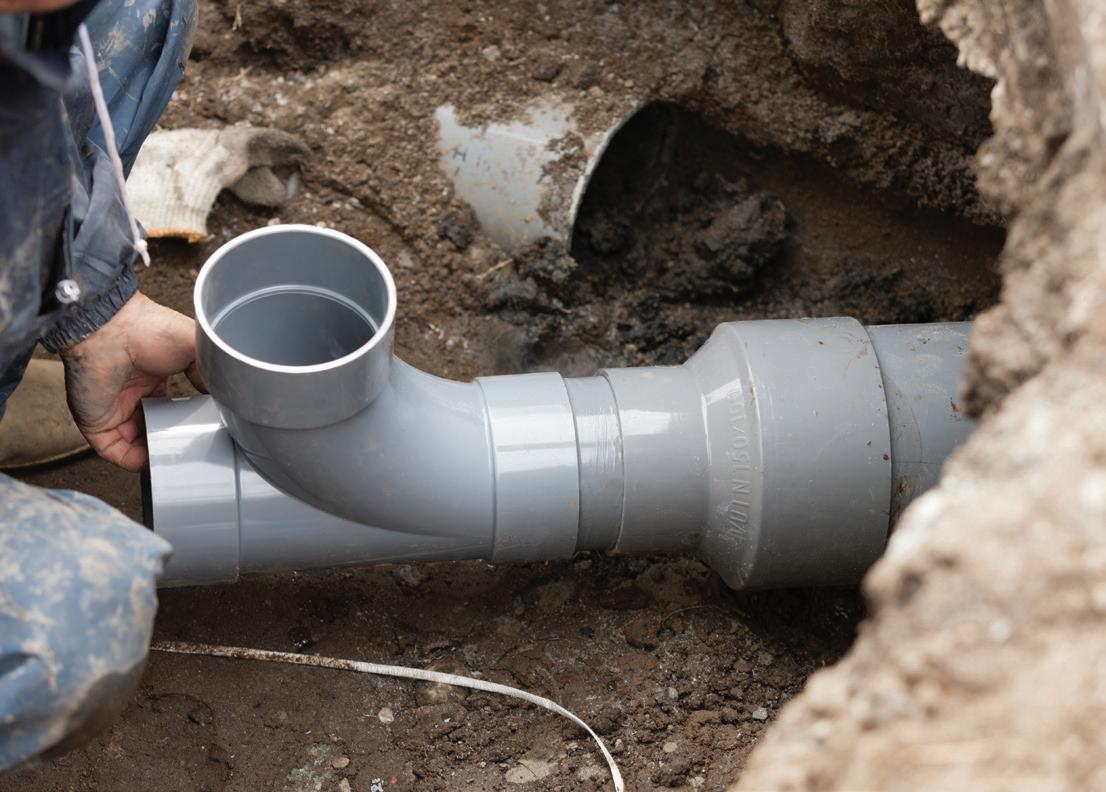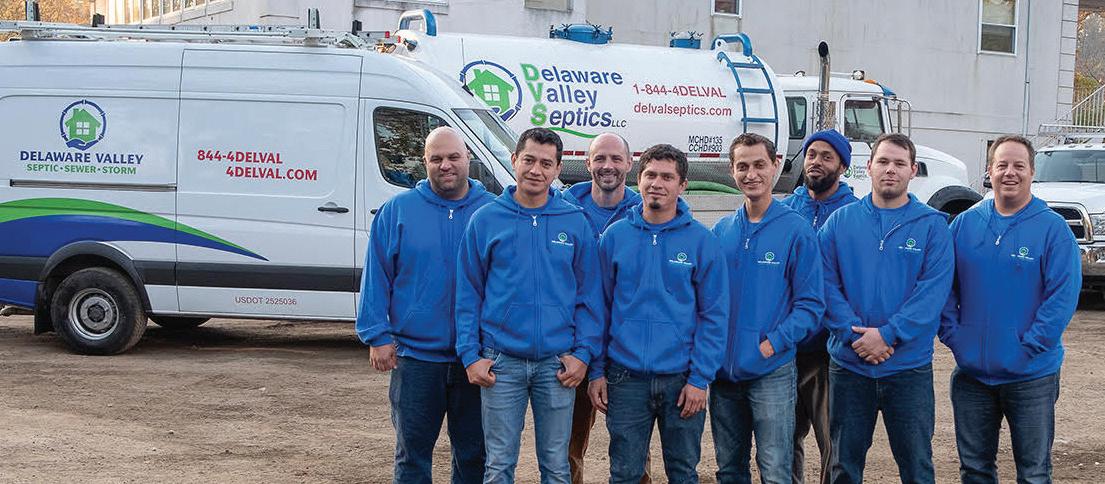
2 minute read
Making the Switch from Septic to Sewer
by Expert Contributors Dave DiGregorio & TJ Dell’Arciprete, Owners of Delaware Valley Septic, Sewer & Storm
Seems like everywhere you turn on Newtown Square roads these days, there are bumps, humps and detours. The upside is that all the work you see going on will soon be completed and will only benefit our wonderful community.
One of the current Newtown Square improvement projects is the installation of the new sewer system. This conversion to public sewer is great for homeowners whose home has a septic system that’s not working properly or has real estate inspection issues.
There are three phases in this Public Sewer Extension Project - 537 Plan: Ashford, Camelot and Springton Pointe, which encompass neighborhoods in Echo Valley and Florida Park as well as areas surrounding Bishop Hollow Road and Campus Boulevard.
If you own a home in the areas listed above, you must choose whether to connect now or defer connection to sometime in the future. Whenever you connect, there’s an initial tapping fee of $6,950 payable to the Municipal Authority. If you defer connecting to the public sewer, you’ll need to provide an annual certification report, which would be allowed for up to 10 years. However, if the home is sold or the existing septic system is found unsatisfactory, you must connect to the public sewer.
Converting from on-site septic to public sewer involves more than just running a new pipe. Many variables will affect your final cost, such as permits, application fees, escrows, user fees and the type of connection. When preparing to make the underground improvements, meeting on-site with your contractors and discussing the installation in detail is absolutely necessary, to identify all obstacles and concerns and minimize surprises.

Most homes will connect via a new gravity PVC sewer main, which, if installed correctly, is virtually maintenance free: You’ll never have to worry about power outages, pump, float or electrical connection failures needing maintenance or repairs to avoid backups into your home. However, if the existing sewer line leading to your septic system is unable to reach the public sewer via gravity, a sewage ejector pump will have to be installed. For that method, most contractors use an “e1” pump station (short for manufacturer environmental one). The average life of a pump station is 10 years, and may require maintenance and a battery backup or generator if you live in an area prone to power outages.
Whenever you do connect, make sure your current septic system is abandoned correctly. Properly decommissioning a septic tank or cesspool is as important as the sewer installation! You don’t want to deal with any surprise sinkholes or cave-ins later when existing components eventually deteriorate and collapse. If you have drainage or seepage fields, nothing needs to be done, but to avoid potential problems, discuss with your contractor how such areas will be handled.
DELAWARE VALLEY Septic, Sewer & Storm
Delaware Valley Septic, Sewer & Storm is a family run business that has been prioritizing customer service & providing the most reliable Septic, Sewer & Storm services for over 30 years.
610-947-4800
www.4DelVal.com
504 Eagle Road, Suite B, Springfield
Our hard working crew!

Our services include:
• Septic, Sewer & Storm Water Installations • Septic & Sewer Inspection • Septic & Storm Pumping • Sewer & Drain Cleaning • Repairs & Maintenance










